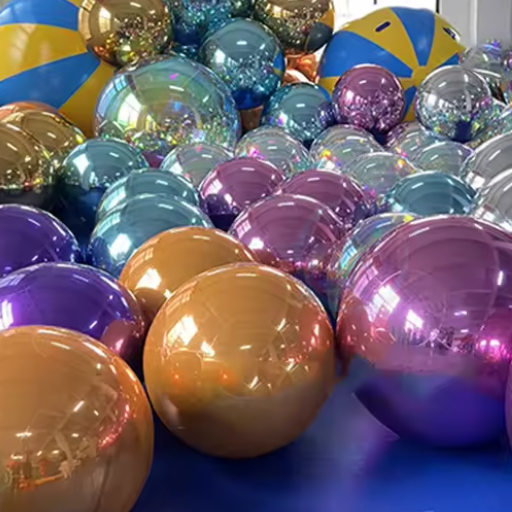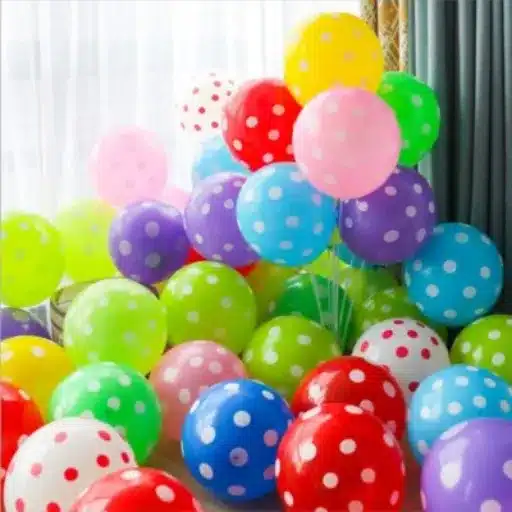Balloons, going old as history, have been continuously used as a symbol of festivity-thereby imparting color and joy to every occasion. However, one question always pops into the minds of party planners and event organizers-How long does a balloon stay? The answer to the query depends upon a few factors, the major ones being the kind of balloon material used, the kind of gas it is filled with, and more importantly, the usage and storage conditions. This article serves as an exhaustive guide containing everything one needs to know about balloon durability, with thorough elucidation on the duration of inflation of latex, foil, and other balloons under different conditions. So, whether you are aiming for an event lasting a day or want your decorations to last longer, this article will dispense a mixture of practical advice and technical understanding requisite for achieving the best outcome.
The Importance of Balloon Longevity in Outdoor Events
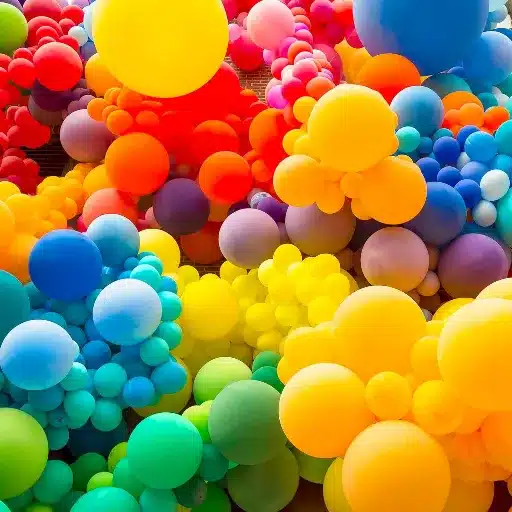
Understanding Balloon Longevity
Unlike most objects that we practically take for granted, balloon longevity depends on a complicated interplay of factors, including the material of composition, environmental setting, and occasionally some protective measures. Latex balloons, for instance, are made from natural rubber and are biodegradable. Yet, they are sensitive to direct exposure to sunlight, heat, and humidity. As they naturally degrade, their endurance is relatively short. Untreated latex balloons generally float for a time period that varies between eight and twelve hours when filled with helium; however, exposure outdoors drastically shortens their average life, especially in the presence of UV rays and high temperatures.
Foil or Mylar balloons tend to be strong and less porous and can hold helium for days or even weeks. Some researches show that foil balloons can remain inflated for about 3-5 days and even longer if an ideal indoor environment is maintained. Therefore, they might last this long if kept indoors; however, changes in temperature will alter their shape and buoyancy.
Why Balloon Lifetime Counts
The longevity of balloons is an essential criterion all across both private and commercial arenas concerning public events, marketing, or décor installations, which will all be compromised operationally with the occurrence of balloon failure. A dependable balloon should guarantee that the decorations stay intact throughout the event; failure and damage to the balloons would affect the decorations’ appeal, thus causing great discontent from the event. Worse still, in large campaigns of publicity or public celebrations, early loss of balloons will cause the increased cost in utilizing alternate means and infuriating the reputation.
Important Note: Untreated latex balloons lose as much as 50% of their helium in 8-12 hours when exposed to usual atmospheric conditions, especially in warm or humid ones. Further than that, utilizing protective means such as sealants or micro-surfacing materials in the production of foil balloons has helped to improve their capacity of retaining helium for at least 150% over their untreated counterparts. Quality balloons have a larger folder to bear environment stresses such as UV radiation and temperature changes and thus are suitable for outdoor events.
Factors Affecting Balloon Durability
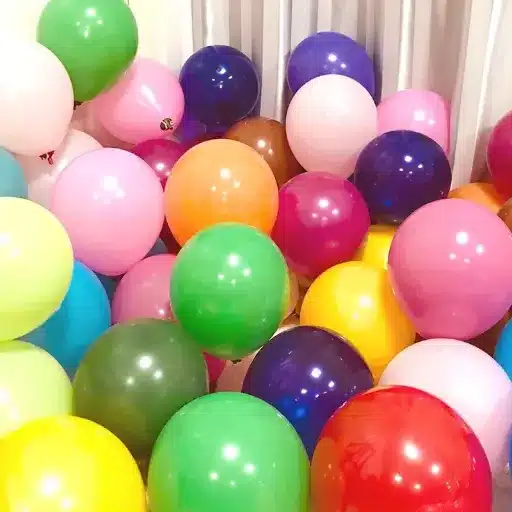
Temperature Range and Its Effects
Latex Balloons:
Latex is a natural polymer sensitive to temperature. At lower temperatures (below 32°F or 0°C), latex balloons tend to become, so to speak, brittle, and more prone to cracking or puncturing. At higher temperatures (above 104°F or 40°C), thermal softening causes a significant lessening in the elasticity of latex, so distortion and a shortened life expectancy of the balloon set in. Besides, studies suggest prolonged exposure to UV rays under a warm environment also speeds up the breakdown of latex, thus increasing its vulnerability over time.
Mylar Balloons:
Mylar, which is essentially stretched polyethylene terephthalate (PET), has a wider operating temperature range when compared to latex. Mylar balloons are able to maintain structural integrity down to -70°F (-56°C) and up to 248°F (120°C)-a very wide range for any balloon indeed. But it is Mylar too, whose performance deteriorates when exposed to high heat; excessive heat could cause warping of the balloon and could also degrade the reflective coating. Moreover, the warming of Mylar could worsen the heat-induced expansion of gases inside the balloon, further risking rupture within a warm atmosphere.
Effect on Gas Retention:
Both latex and Mylar balloons suffer from shrinkage and expansion due to temperature variations. On heating, the gases inside the balloon expand, thereby increasing the pressure inside and chances of rupture. This is more in the case of latex balloons since they are thinner in structure. On cooling down, the gases contract, hence, lowering the inflation and lift and adversely affecting the appearance.
Humidity Levels and Balloon Performance
Humidity levels intervene in the performance and longevity of balloons mainly if vigorous moisture changes occur within the environment. In high humid environments, latex balloons undergo quick degradation, as moisture accelerates latex degradation at a molecular level. Studies reveal that prolonged exposure to humidity levels of above 80% can cause latex balloons to degrade 40% faster than the rates observed in storage under controlled and dry environments, almost rendering them unusable in the long run under outdoor conditions in tropical or humid climates.
Alternatively, materials such as Mylar, or ‘foil’ for short, unite higher resistance against humidity. The non-porosity and water-resistant nature of Mylar prevent it from absorbing moisture, thereby ensuring the balloon retains its structure and buoyancy for longer periods. However, when the ambient air is too humid, even Mylar balloons may develop condensation problems, which could hamper the visual appeal of the balloons or produce undetectable stickiness between layers.
Extending Balloon Life: Some Practical Tips

Balloons should be stored in a controlled environment, away from the extremes of temperature or direct sunlight, which would cause deterioration of the materials. I apply a Hi-Float protective coating to latex balloons, which acts as a barrier to air leakage. Furthermore, I never overinflate balloons, placing undue stress on their material, and I store them in a cool, dry place when not in use to maintain their quality.
Best Conditions for Air-Filled Balloon
Temperature:
Studies and industry best practices assert that these balloons perform best in a temperature range of 65°F to 72°F (18°C to 22°C). At higher temperatures, latex balloons begin to expand and may burst; at lower temperatures, they tend to deflate because of the contraction of the air inside them.
Humidity Control:
For the structural integrity of air-filled balloons, humidity within 30 to 50% becomes an ideal point. Excess moisture in the atmosphere would lead to latex weakening, reducing its elasticity and life, while it can make it brittle with too dry conditions.
UV Exposure:
UV rays, particularly in direct sunlight, expedite the degradation of both latex and foil balloons by breaking down their structural polymers. Research has proven that balloons exposed to prolonged UV light may have their usable life reduced by as much as 50%. If used outdoors, a significantly higher reduction will come from a shading system for the balloons or an alternative that resists UV degradation.
Protection from Heat
Set Up for Plenty of Shade
Keeping balloons under canopies, tents, or indoors helps prevent high-stress exposure to the direct sunlight. Research shows keeping balloons in shade can increase their usability by two to three days compared to balloons kept out in the sun.
Use UV-Protectant Spray
Opportunities abound for specialized spraying and treatment towards UV protection for latex. Such sprays lay down a protective layer, thus retarding oxidation so as to conserve the appearance of the balloon.
Inflate in Cooler Air
Balloons should be inflated in an air-conditioned environment and carried to the event location later. This practice will reduce air pressure due to thermal expansion inside balloons, thus preventing its over-inflation and bursting under higher heat conditions.
Choosing Between Helium and Air-Filled Balloons
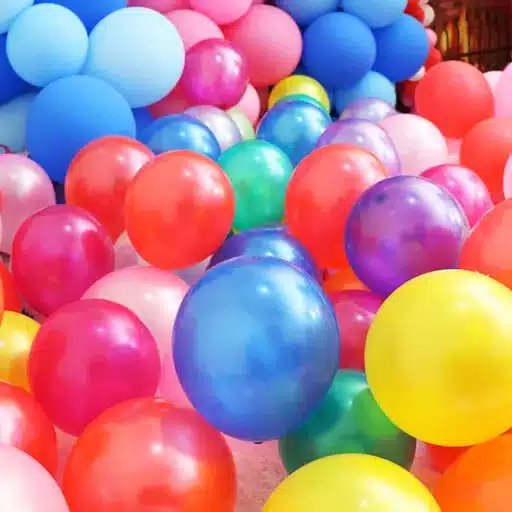
When Must Helium Be Used
Events requiring a floating decoration of high visual impact are the best candidates for helium decorations. Since helium is a gas lesser in weight than the environment, the balloons are floating and hovering, making them suitable for creating stunning displays such as balloon arches, ceiling decorations, or designs. Studies show that, in the absence of treatment, helium balloons can stay lifted for about 12 to 24 hours. But latex balloons protected with Hi-Float float for days.
Balloon decorations suspended by helium are a great practical option for large venues where they can be used to demarcate space or draw attention to a particular focal point. Overbearing consumption of helium gas is a crime as its resources are limited and their costs may be erratic due to fluctuating supply levels worldwide. Therefore, use of helium should be optimized according to the event need, such as an indoor gala event, promotional displays, or an outdoor celebration where a grounded balloon décor will drag.
Advantages of Air-Filled Balloons
Air-filled balloons have many benefits, ranging from their cost-effective nature to their versatile usage when compared to helium-filled balloons. One good advantage is their long life span. When helium slowly leaks out of the latex material since its molecules are smaller than those of air, aerated balloons remain stiff for days up to weeks under favorable conditions. Therefore, they are the most appropriate balloons for long-term displays, such as arches, garlands, and backdrops for any events.
Another advantage is that it is much cheaper to use air instead of helium. Being a limited resource, helium is very expensive, while air is free and comes with no additional cost to anyone. A 2023 report from the gas industry highlighted that helium prices have gained almost 20 percent as the past year witnessed an increase in demand and shrinking supply, making air-filled balloons a cost-efficient alternative for large-scale decoration projects.
Conclusion and Further Reading

Summary of Key Points
Helium-Filled Balloons
One of the major attractions of helium-filled balloons is their ability to float and therefore auralizing the arrangements of the events. However, they are highly dependent on external factors such as temperature changes; as helium either expands or contracts with temperature changes, it causes very swift deflation. Latex helium balloons typically last from about 12 to 24 hours and foil helium balloons last from about 2 to 5 days if held under perfect conditions.
Air-Filled Balloons
Provided that floating is not an option, air balloons certainly offer the following great benefits in terms of stability and life span; when properly sealed, air-filled latex balloons can last for several days to weeks, and the foil variety can last for more than a month, while temperature variations will not affect them, and both are structurally sound. Hence, air balloons are safe for both outdoor and indoor use.
Environmental considerations
This finite resource gradually sees heavier industrial and scientific use, which makes it relatively less sustainable to be used for balloons. Air-filled balloons, on the other hand, are more environmentally friendly, especially when made from natural latex. Biodegradable latex could survive in landfill for anything between six months and one year in natural conditions. Foil balloons are not biodegradable and need to be disposed of appropriately.
Reference Sources
-
Chaoee
- Title: “How Long Do Latex Balloons Last in Different Conditions”
- URL: Chaoee
- Summary: This article explains how environmental factors like heat, sunlight, and humidity affect the lifespan of air-filled balloons. It also provides tips for extending their durability in outdoor conditions.
-
Balloon Crew’s Views
- Title: “Tips For Getting Balloons to Last Longer in Hot Weather”
- URL: Balloon Crew’s Views
- Summary: This blog offers practical advice for preserving balloons in hot weather, including under-inflation techniques, material choices, and shading strategies.
-
Fashion Balloons
- Title: “Do Balloons Pop in the Heat?”
- URL: Fashion Balloons
- Summary: This resource discusses how heat impacts both air-filled and helium balloons, with insights into material behavior and tips for preventing balloons from popping in high temperatures.
Frequently Asked Questions
How long do air-filled balloons stand in the heat outside?
Air-filled balloons will last anywhere from a few hours to several days in extreme heat. The heat causes the air molecules inside the balloons to expand and, thus, popping or deflation. Maximizing their lifespan entails keeping air-filled balloons away from direct sunlight and hot surfaces.
How much time do balloons have in front of them in hot weather?
When the condition is hot, air-filled balloons may start to deflate faster than usual. Although the heat increases the internal pressure, it causes the balloons to pop or lose air faster. To help your balloons last longer, set your balloon decorations in areas protected by shade or indoors where your outdoor party will be held.
Do air-filled balloons pop in heat?
Yes, balloons filled with air can pop in extreme heat. Rising temperatures cause the air inside the balloons to expand, placing pressure on the balloon walls. And if that pressure becomes more than the balloons can handle, they will pop. So keep them cool in order to prevent popping.
How do you keep balloons inflated longer through the heat?
In keeping the balloons inflated longer through heat, you can use good-quality balloon material and get them filled properly. Avoid over-inflating the balloons and keep them in shaded areas as much as you can. Alternatively, you can create balloon garlands or columns that would help keep gazes away from a direct blaze of sunlight.
Which balloons last longer outdoors- helium or air-filled?
In general, helium balloons float longer than the air-filled ones, but when the question comes to lasting in the outdoors in the heat, air-filled balloons may take the lead. Air-filled balloons stay put unlike helium balloons that float away, and temperature changes don’t affect air-filled balloons as drastically as they do helium ones.
What causes balloons to begin the deflate?
The reason for balloons beginning to deflate includes temperature changes and the natural permeability of the balloon material. Thus, the higher the heat gets, the more the air inside balloons expands, which can eventually worsen the situation by forcing that air out and leaving the balloons empty or semi-empty, losing shape and volume.
With proper care and understanding of the factors that affect balloon longevity, you can ensure your decorations remain vibrant and intact throughout your event. Choose the right balloon type for your specific needs and follow the best practices outlined in this guide for optimal results.

